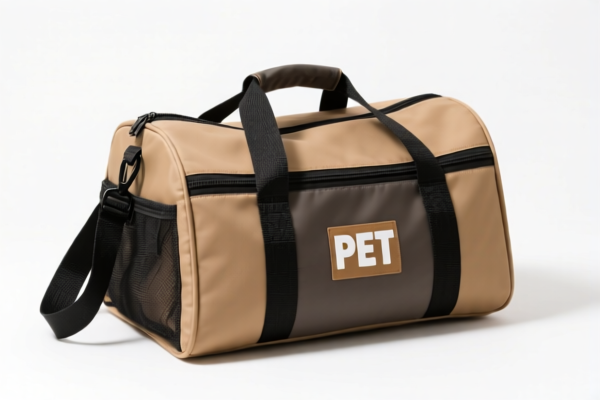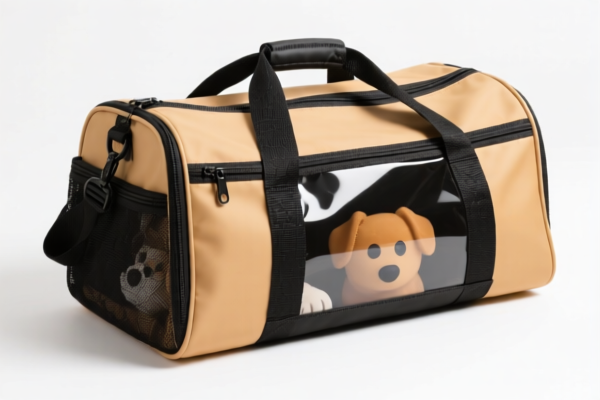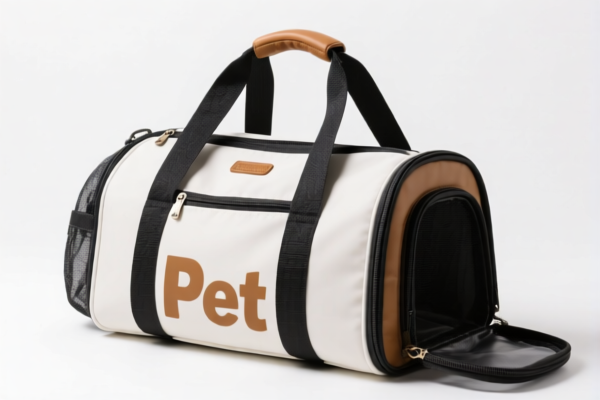| HS Code | Official Doc | Tariff Rate | Origin | Destination | Effective Date |
|---|---|---|---|---|---|
| 4201003000 | Doc | 57.4% | CN | US | 2025-05-12 |
| 4201006000 | Doc | 57.8% | CN | US | 2025-05-12 |
| 4202922000 | Doc | 60.7% | CN | US | 2025-05-12 |
| 4202995000 | Doc | 62.8% | CN | US | 2025-05-12 |
| 1905909090 | Doc | 42.0% | CN | US | 2025-05-12 |
| 1904900140 | Doc | 51.5% | CN | US | 2025-05-12 |
| 3923210085 | Doc | 58.0% | CN | US | 2025-05-12 |
| 3923210080 | Doc | 58.0% | CN | US | 2025-05-12 |
| 3915900090 | Doc | 55.0% | CN | US | 2025-05-12 |
| 3915900010 | Doc | 55.0% | CN | US | 2025-05-12 |
| 6114909070 | Doc | 35.6% | CN | US | 2025-05-12 |




Dog Bag
A dog bag, also commonly known as a poop bag, doo-doo bag, or waste bag, is a disposable bag used to collect and dispose of pet waste, primarily dog feces.
Material
Dog bags are typically made from the following materials:
- Polyethylene (PE): The most common material due to its low cost, water resistance, and flexibility. Variations include Low-Density Polyethylene (LDPE) and High-Density Polyethylene (HDPE).
- Biodegradable Plastics: Increasingly popular, these bags are designed to decompose under specific environmental conditions (often industrial composting facilities). Common biodegradable materials include cornstarch-based plastics like PLA (Polylactic Acid), PBAT (Polybutylene Adipate Terephthalate), and compostable polymers. Note: "Biodegradable" claims vary significantly; some require specific composting conditions to break down effectively.
- Compostable Plastics: Specifically designed to break down in municipal or home composting systems. These are often certified by organizations like BPI (Biodegradable Products Institute).
- Paper: Less common, paper bags are often coated with a water-resistant layer.
Purpose
The primary purpose of a dog bag is to maintain public hygiene and sanitation by:
- Containing Odor: Sealing waste to minimize unpleasant smells.
- Preventing the Spread of Bacteria and Parasites: Dog waste can contain harmful pathogens and parasites.
- Facilitating Easy Disposal: Providing a convenient method for removing and discarding waste.
- Complying with Local Regulations: Many municipalities require dog owners to clean up after their pets.
Function
Dog bags function as a simple containment vessel. They are typically used in conjunction with a bag dispenser, often attached to a leash or carried separately. The process involves:
- Dispensing: Removing a bag from the dispenser.
- Inversion: Placing the bag over the hand (like a glove).
- Collection: Picking up the dog waste through the bag.
- Inversion/Sealing: Turning the bag inside out over the waste, creating a sealed package.
- Disposal: Tying the bag securely and disposing of it in a designated waste receptacle.
Usage Scenarios
Dog bags are used in a wide variety of locations including:
- Parks and Public Spaces: Essential for responsible pet ownership in shared outdoor areas.
- Residential Streets and Sidewalks: Maintaining cleanliness in neighborhoods.
- Walking Trails and Hiking Paths: Protecting natural environments.
- Dog Parks: Ensuring a sanitary environment for all dogs.
- Backyards: Convenient for daily waste removal.
Common Types
- Roll Bags: The most common type, consisting of a continuous roll of individual bags.
- Bag Dispensers: Containers designed to hold and dispense roll bags, often attached to leashes or carried in pockets.
- Scented Bags: Bags infused with fragrances to mask odors.
- Tie-Handle Bags: Bags with pre-formed handles for easy tying and carrying.
- Biodegradable/Compostable Bags: Environmentally friendly alternatives to traditional plastic bags.
- Block Bags: Bags are connected but easily tearable, often used in automatic dispensers.
- Pouch Bags: Bags are stored in a pouch-like container, with an opening for easy access.
Dog bags generally refer to containers used for carrying or storing items related to dogs, such as food, toys, or waste. Based on the provided reference material, the following HS codes may be relevant:
-
4201003000: Saddlery and harness for any animal (including traces, leads, knee pads, muzzles, saddle cloths, saddle bags, dog coats and the like), of any material. This code specifically includes “dog coats and the like, saddle bags” which could encompass certain types of dog bags designed for carrying items.
- Chapter 42: Articles of leather or of composition leather, travel goods, handbags and the like. This chapter covers a wide range of leather and similar articles.
- Heading 4201: Saddlery and harness for any animal. This heading focuses on equipment for animals.
- Subheading 4201003000: Specifically covers dog leashes, collars, muzzles, harnesses and similar dog equipment.
- Tax Rate: Basic tariff: 2.4%, Additional tariff: 25.0%, Additional tariff after 2025.4.2: 30.0%, Total tariff: 57.4%.
-
3923210085: Articles for the conveyance or packing of goods, of plastics; stoppers, lids, caps and other closures, of plastics: Sacks and bags (including cones): Of polymers of ethylene Reclosable, with integral extruded closure: Polyethylene retail carrier bags (PRCBs) with handles (including drawstrings), with no length or width shorter than 6 inches (152.4 mm) or longer than 40 inches (1,016 mm). This code may apply if the dog bag is made of polyethylene plastic and is a reclosable carrier bag type.
- Chapter 39: Plastics and articles thereof. This chapter covers plastic products.
- Heading 3923: Articles for the conveyance or packing of goods, of plastics. This heading focuses on plastic containers.
- Subheading 3923210085: Specifically covers polyethylene retail carrier bags with handles and specific size requirements.
- Tax Rate: Basic tariff: 3.0%, Additional tariff: 25.0%, Additional tariff after 2025.4.2: 30.0%, Total tariff: 58.0%.
-
3923210080: Articles for the conveyance or packing of goods, of plastics; stoppers, lids, caps and other closures, of plastics: Sacks and bags (including cones): Of polymers of ethylene Other: With no single side exceeding 75 mm in length. This code may apply if the dog bag is made of polyethylene plastic and is a smaller sack or bag type.
- Chapter 39: Plastics and articles thereof. This chapter covers plastic products.
- Heading 3923: Articles for the conveyance or packing of goods, of plastics. This heading focuses on plastic containers.
- Subheading 3923210080: Specifically covers polyethylene sacks and bags with size limitations.
- Tax Rate: Basic tariff: 3.0%, Additional tariff: 25.0%, Additional tariff after 2025.4.2: 30.0%, Total tariff: 58.0%.
Customer Reviews
No reviews yet.